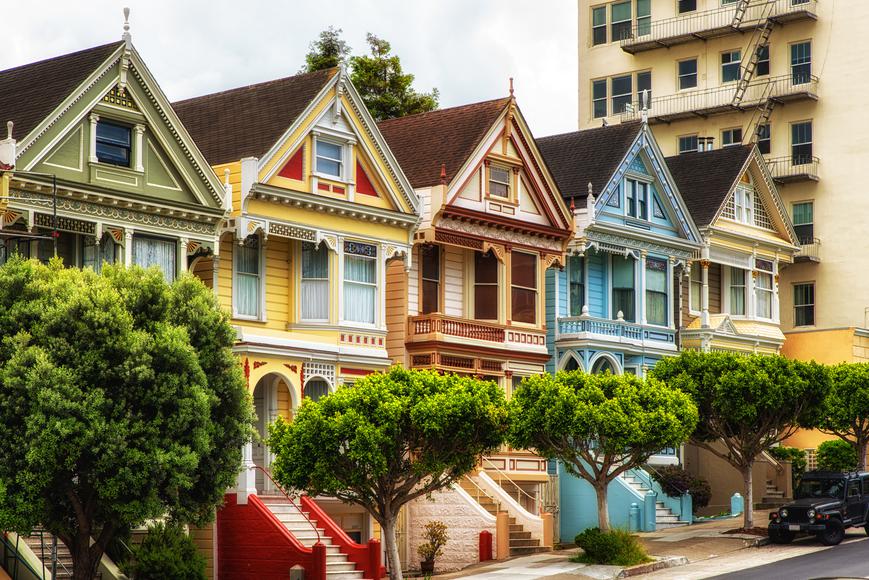San Francisco, a city renowned for its iconic Golden Gate Bridge, vibrant culture, and steep hills, also boasts a picturesque architectural landmark: the Painted Ladies. These Victorian and Edwardian houses are more than just a charming array of colors; they are a testament to the city's historical and cultural evolution.
Historical Background
The term "Painted Ladies" refers to Victorian and Edwardian houses and buildings painted in three or more colors to enhance their architectural details. The most famous cluster of Painted Ladies is located at Alamo Square's Steiner Street, known as "Postcard Row," offering a stunning backdrop with the San Francisco skyline.
The history of the Painted Ladies dates back to the late 1800s and early 1900s. During this period, San Francisco experienced rapid growth due to the Gold Rush. This economic boom led to a surge in construction, with Victorian-style houses becoming a popular choice for the emerging middle class. Originally, these homes were painted in earth tones, typical of the Victorian era. However, it was not until the 1960s and 1970s that the Painted Ladies acquired their vibrant hues.
Architectural Significance
The architectural style of the Painted Ladies is primarily Victorian and Edwardian. These styles are characterized by intricate woodwork, asymmetrical shapes, large bay windows, and expansive porches. The multicolor paint schemes highlight these details, bringing to life the craftsmanship of a bygone era.
The Painted Ladies of San Francisco are a remarkable example of how architecture can encapsulate the essence of a period. The ornate details and bold colors reflect the optimism and prosperity of the post-Gold Rush era, while their restoration and preservation symbolize the city's commitment to maintaining its cultural heritage.






